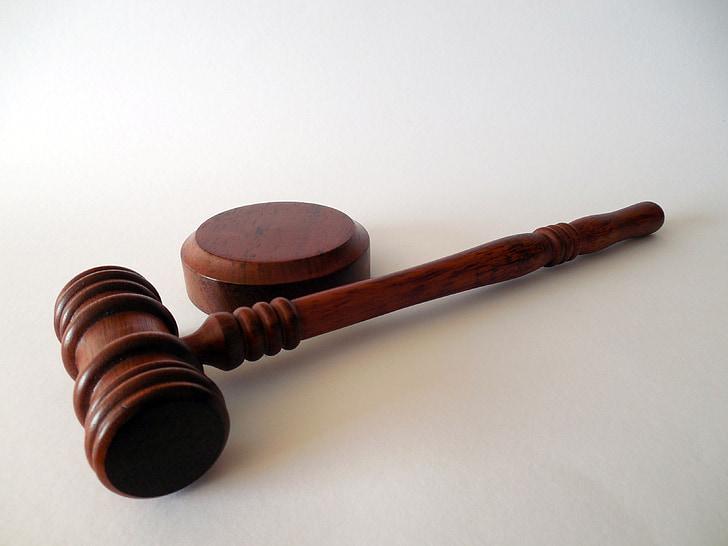
When it comes to product liability claims, understanding the statute of limitations is critical. If a defective product has caused you harm, missing the filing deadline could result in your lawsuit being dismissed, leaving you without legal recourse. Moreover, there are product liability claims statute of limitations you must know, regardless of your situation.
Whether you’re pursuing a personal injury claim or a defective product lawsuit, knowing when exactly the statute begins and how long you have to act could make all the difference in securing justice and compensation.
Therefore, this article covers everything, informing consumers with fairly straightforward language all about the manufacturer’s notifications in case a victim discovers any kind of product liability. Understanding the personal injury statute is the first step, so let’s begin with that.
What Is a Statute of Limitations?
A statute of limitations is a law limiting the amount of time an injured person has to file a legal claim. In the context of product liability, this period determines how long after an injury occurred you can bring a lawsuit against a product manufacturer or seller. Each state has its own statute that governs personal injury cases and product liability claims.
The limitations period generally begins when the injury occurs. However, there are nuances, especially when the discovery rule applies.
In some situations, the injured person may not immediately realize the extent or even the existence of the injury caused by a defective product. This is where understanding the injury discovery rule becomes vital.
The product liability statute is where the limitations begin during the initial purchase. The limitations govern the rules set and safeguard consumers.
If the plaintiff discovers issues with the products and proves it, it can lead to a time limit of twelve years from the date on which a defective product is sold.
The Discovery Rule and Latent Injuries
The discovery rule allows the limitations clock to start not at the time the injury occurred, but when the injured person discovered, or reasonably should have discovered, the injury and its connection to the defective product. This rule often applies in personal injury cases involving latent injuries, like when a victim develops lung inflammation after using defective medical devices.

Example
For example, if a consumer uses a defective electric carving knife and sustains a hidden internal injury that only becomes apparent months later, the discovery rule might delay the start of the statute of limitations.
The law generally expects reasonable diligence from the injured party, but also aims to avoid punishing individuals for not discovering their injury immediately.
Types of Product Liability Claims
Product liability lawsuits usually fall into three categories:
- Manufacturing Defects: These occur when a product departs from its intended design during production, making it dangerous to use.
- Design Defects: The entire product line is flawed due to a poor design that makes the product inherently dangerous.
- Marketing Defects: These include inadequate instructions, failure to warn, or misleading advertisements.
Strict liability cases are common in product liability because victims don’t always need to prove negligence—just that the product was defective and caused harm.
However, even in strict liability, both the statute and the discovery rule can influence whether a case is viable.
How Long Do You Have to File?
Most states allow between 2 and 4 years from the date of injury to file a product liability claim. However, some states like South Carolina follow a longer statute. Furthermore, the state’s statute may also feature an absolute time limit known as a statute of repose. This law limits the time you have to file, regardless of when the injury was discovered.
For instance, if a product was initially purchased 12 years ago, a state’s statute of repose might bar any defective product claim even if the injury occurred recently. Repose laws generally establish secondary time limits to protect manufacturers from indefinite liability.

Time Limits for Government Entities and Special Circumstances
If your product liability claim involves a government entity—such as a defective product manufactured or approved by a public agency—different rules and shorter deadlines may apply. Additionally, if you received free medical care from a government facility, you might face additional requirements for providing sufficient notice before filing your claim.
What Happens If the Statute Expires?
If the limitations period expires before you file your claim, you risk having your lawsuit dismissed. This harsh consequence highlights the importance of being proactive and understanding your legal rights.
Many people mistakenly believe they have more time than they actually do. Others may not realize they can seek compensation for injuries from dangerous products.
The Importance of Timely Legal Action
Prompt legal action ensures access to fresh evidence, accurate witness accounts, and relevant medical records. Filing a timely claim also pressures product manufacturers to settle fairly and responsibly. Courts are less sympathetic to plaintiffs who delay without cause, even if their claims are valid.
Furthermore, manufacturers sometimes deliberately notify potential plaintiffs through product recalls or safety alerts.
This may be seen as providing sufficient notice and starting the limitations clock sooner. Therefore, it’s essential to keep documentation and monitor any manufacturer communications regarding product defects.
Role of a Product Liability Attorney In Product Liability Claims
Navigating the complexities of the statute of limitations, the discovery rule, and different state laws requires legal expertise. A skilled product liability attorney can evaluate your situation, determine when your limitations period begins, and ensure that your rights are protected.
They can also assist in collecting medical records, product specifications, and manufacturer communications to build a compelling case.
At Bourassa Law Group, we represent injured individuals in product liability and personal injury claims. Our team is dedicated to helping victims of defective products pursue the justice they deserve.
We understand the devastating impact that a defective product can have on your health, finances, and peace of mind.
Common Products Involved in Liability Claims
- Medical Devices: Pacemakers, surgical mesh, hip replacements
- Household Appliances: Electric carving knives, heaters, blenders
- Children’s Products: Toys with small parts or toxic materials
- Automotive Parts: Airbags, brakes, ignition switches
In more unique cases, you might even have a product liability case against a fireworks company. If you’ve been harmed by a defective product, whether due to a manufacturing or marketing defect, you may have grounds for a product liability lawsuit.
What to Do If You’re Injured by a Defective Product
- Seek Immediate Medical Attention: Get free medical care if available and document all treatments.
- Preserve the Product: Do not throw away the defective product. It is key evidence.
- Document Everything: Take photographs, save receipts, and collect medical records.
- Consult a Personal Injury Lawyer: Don’t wait until the statute expires. Act promptly.
Final Thoughts
Understanding the statute of limitations for product liability claims is crucial for preserving your right to seek compensation. Whether you’re dealing with a dangerous product, a strict liability case, or latent injury, acting within the legal time limits can mean the difference between justice and dismissal.
Fight Product Liability Claims with BLG
If you’ve been injured by a defective product, don’t delay. Contact Bourassa Law Group for a free consultation. Our experienced attorneys will help you understand your legal rights, guide you through the process, and ensure your claim is filed on time. Let us help you secure the justice and compensation you deserve.





